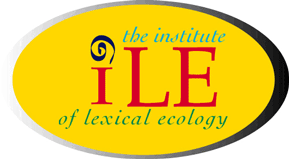
Heterolexical Subjectivity : Nymphotextuality
2. Psychological factors affect basal metabolism through the reaction of the endocrine system.
a) Pearl, in a study of more than 2,000 individuals who lived to the age of 90 or more (25), was able to find only one significant trait among them, outside of their longevity, wherein the group differed from the rest of mankind as a whole: their calm mental make-up. They all were possessed of a placid temperament, were relaxed, and were rarely worried.
b) Brody points out that mental factors causing insecurity and tension shorten the duration of life in many ways (12).
c) Married persons live considerably longer than unmarried persons (8). The security and regularity of wedded life probably reduce the tension and insecurity that more often accompany the single state, as psychoanalysts and sexologists assert, with a consequent increase in life span of the average married person.
d) Urban dwellers have a much lower life expectancy than rural people, although the gap is gradually decreasing (25). An explanation of this difference may lie in the greater excitement and uncertainty of city life, a major sociophysiological difference between rural and urban life. The fact that newspapers, rapid transport, movies, and the radio are gradually bringing the tension and competitiveness of modern life to rural regions probably accounts for the lessening of the gap.
“Espinas (1878), two years before Kessler’s lecture, had given a similar interpretation which he supported by the best observations then available. Espinas emphasized the naturalness of the cooperative, social drives. Geddes and Thompson reaffirmed a similar conclusion in 1911: ‘We may therefore restate the concluding thesis of our “Evolution of Sex” (1889) since elaborated in various ways by Drummond, by Kropotkin and others. It is that the general progress both of the animal and plant world, and notably the great uplifts [our emphasis], must be viewed not simply as individual but very largely in terms of sex and parenthood, of family and association; and hence of gregarious flocks and herds, of cooperative packs, of evolving tribes, and thus ultimately of civilized societies. . . .’
“The idea did not catch general scientific attention despite thc emphasis placed on such an interpretation by Delage and Goldsmith (1912), Reinheimer (1913, 1920), and William Patten, who in 1920 made the cooperative principle the central point in his ‘grand strategy of evolution.’ The neglect continues despite the repeated emphasis given by William Morton Wheeler (1923, 1930), despite my own summaries of supporting evidence and the more recent adoption of this point of view by Emerson (1942), Gerard (1942) and others whose opinions should carry weight.”
All Material (excepting citations) Copyright © 2007 The Institute of Sociophysiology and Editions MSS
www.isocphys.org/ile/LESP-Covert/